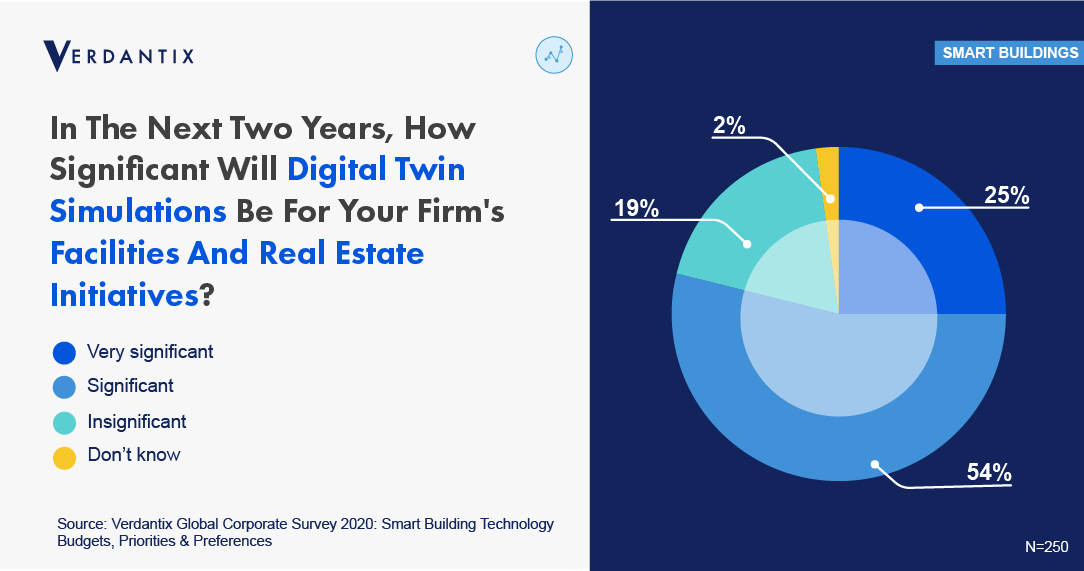Microsoft Extends Its Foray Into Smart Buildings With Azure Digital Twins
The past two years have seen a growing number of digital twin software products launched across the smart building market, as vendors look to take advantage of the latest advances across data science and simulation. One notable product launch came from Microsoft, which in December 2020, announced the general availability of Azure Digital Twins, providing Azure customers access to ready-to-use building blocks that create comprehensive digital models. Microsoft’s ambition is to make the creation of sophisticated digital twin solutions easy for end-users and partners.
Azure Digital Twins is an IoT platform that enables firms to create a digital representation of real-world things, buildings and business processes. Firms can centralize and integrate disparate systems and data via the Azure IoT Hub within the platform to provide a single pane of glass view into building operations. Microsoft’s Digital Twins Definition Language, an open modelling language, allows firms to define their own vocabulary and build their twin graphs, as well as run a series of advanced analytics.
By targeting and collaborating with vendors looking to build a digital twin capability quickly, Microsoft is rapidly expanding its presence in the smart buildings market. For example, in August 2020, L&T Technology Services Limited (LTTS) collaborated with Microsoft to leverage Azure to enable i-BEMSTM, a cloud-based and IoT-enabled BMS solution, to unify data from multiple systems into a single pane of glass view. LTTS i-BEMS previously integrated Azure Digital Twins to provide real-time automated IoT alerts to improve resolution times. Then in December 2020, Johnson Controls announced it will incorporate Microsoft’s Digital Twin in its OpenBlue IoT platform, helping it create detailed digital versions of physical buildings, assets and systems. Ansys, Bentley Systems, Bosch, ICONICS, Samsung and Willow also use Azure Digital Twins in their software applications.
Over the past two years, spend on smart building digital twins has been growing amongst early adopters, including hospitals, stadiums and campuses. For example, in August 2020, Cityzenith was selected by Orlando Sports & Entertainment Smart District to deploy its SmartWorldPro2 digital twin solution to optimize and future proof the property. Hamilton Health Sciences uses ThoughtWire’s digital twin platform to manage complex patient workflows to speed up emergency response times. With 25% of executives globally predicting that digital twin simulations will be significant for facility management in the next two years, spending by other sectors is looking set to follow.
To find out more about digital twins for buildings, read our report Smart Innovators: Digital Twins For Buildings.

About The Author

Joy Trinquet
Senior Analyst





